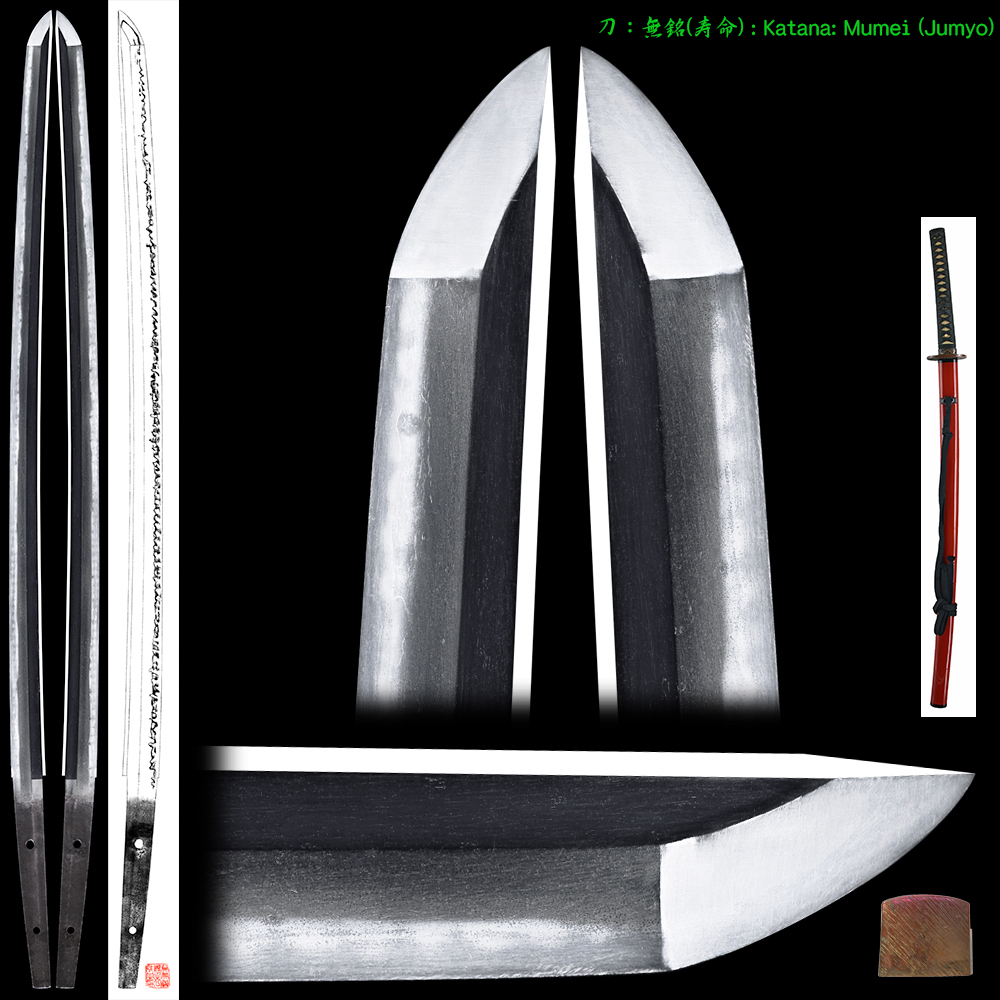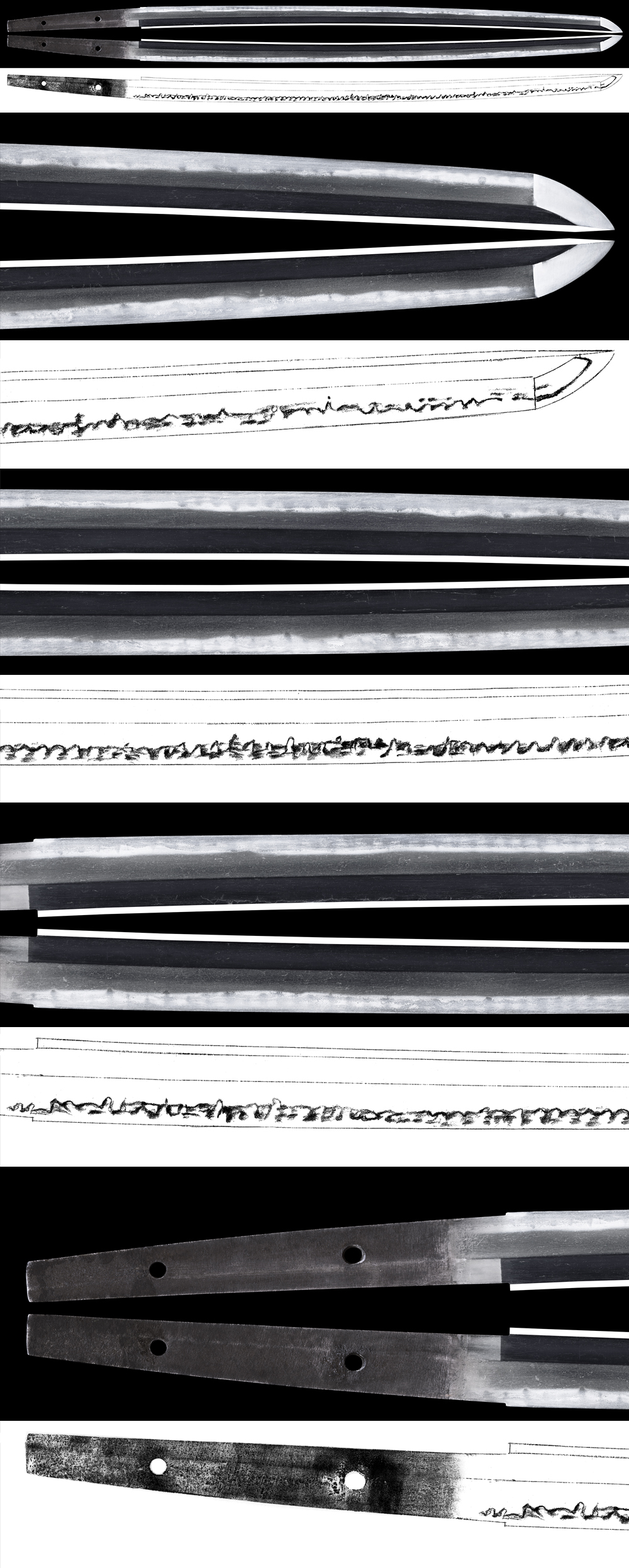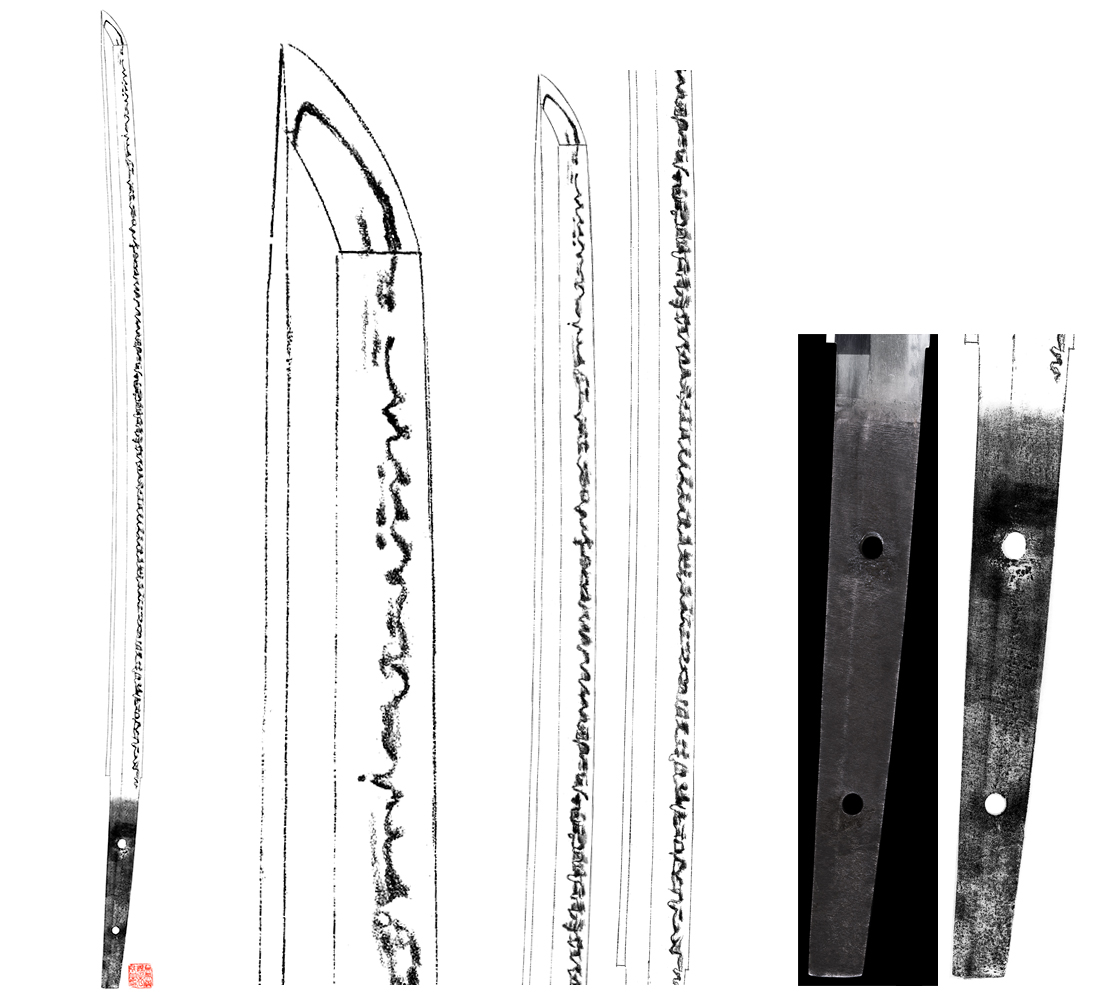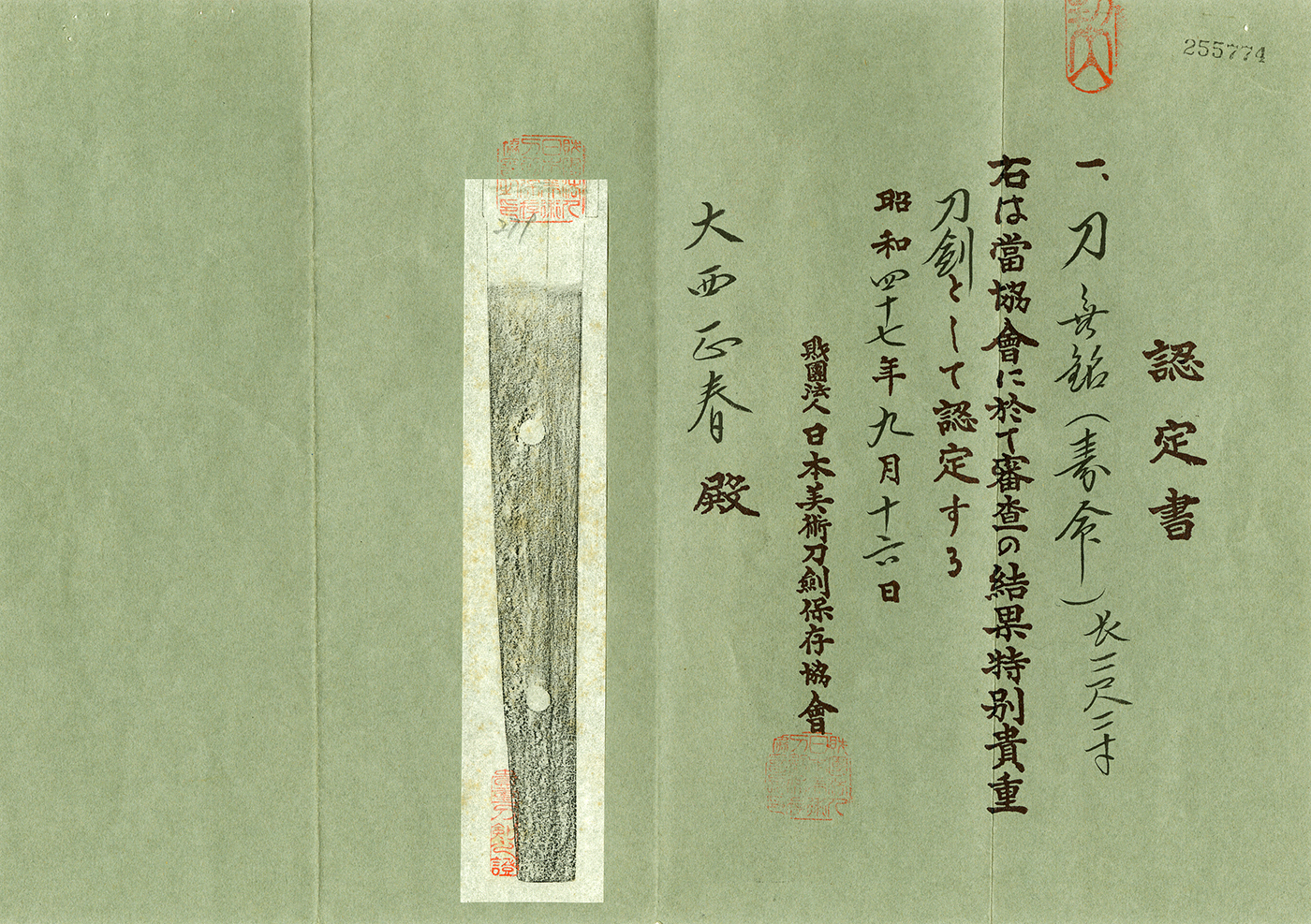Katana: Mumei (Jumyo)
2017/01/24
Katana in Koshirae(NBTHK Tokubetsu Kicho paper)(Guarantee: NBTHK Hozon Paper)
Signature : Mumei (Jumyo)
(We divide 4 sections for each sword as Saijyo saku, Jyojyo saku Jyo saku and regular saku)
This sword belongs to regular saku ranking.
The blade was polished.
Blade length : 66.7 cm or 26.25 inches.
Sori : 0.6 cm or 0.23 inches.
Mekugi : 2
Width at the hamachi : 2.91 cm or 1.14 inches.
Width at the Kissaki : 2.10 cm or 0.82 inches.
Kasane : 0.65 cm or 0.25 inches.
Era : Edo periods Kanbun era.
Shape : The blade is suriage mumei(cut shortened) kanbun shape.
Jitetsu : Item had well grained with jinie attach and visible to see the texture.
Unfortunately there is Kizu on the Shinogiji on the back.
Hamon : Niedeki gunome midare. In Hamon, there are some sunagashi work.
Special feature : It is said that the First Jumyo moved from Yamato province to Mino province
in the last Kamakura period. The workmanship was influenced by both provinces.
The name Jumyo has been thought as a very auspicious for longevity and used for gift.
It is said that the First Jumyo moved from Yamato province to Mino province in the last Kamakura period.
The workmanship was influenced by both provinces.
The name Jumyo has been thought as a very auspicious for longevity and used for gift
and many swordsmiths used the same name for generations. One of them forged
The blade is suriage munei and with small sori Kanbun shape.
From the hamon, and jigane, the blade might be Mino province Jumyo swordsmith.
Koshirae :
Tsuba : On the copper Tsuba, the person who play the drum and the person who dance with folding fan are engraved with gold and silver color.
Fuchikashira : Iron plate, the wheel is engraved with copper color.
Saya : Red color.
Menuki : Armor is engraved with copper color.
NBTHK Tokubetsu Kicho paper
(We guarantee this blade will pass NBTHK Hozon Shinsa.
We will submit to NBTHK Shinsa if requested.)
Aoi Art estimation paper : whole Oshigata.







